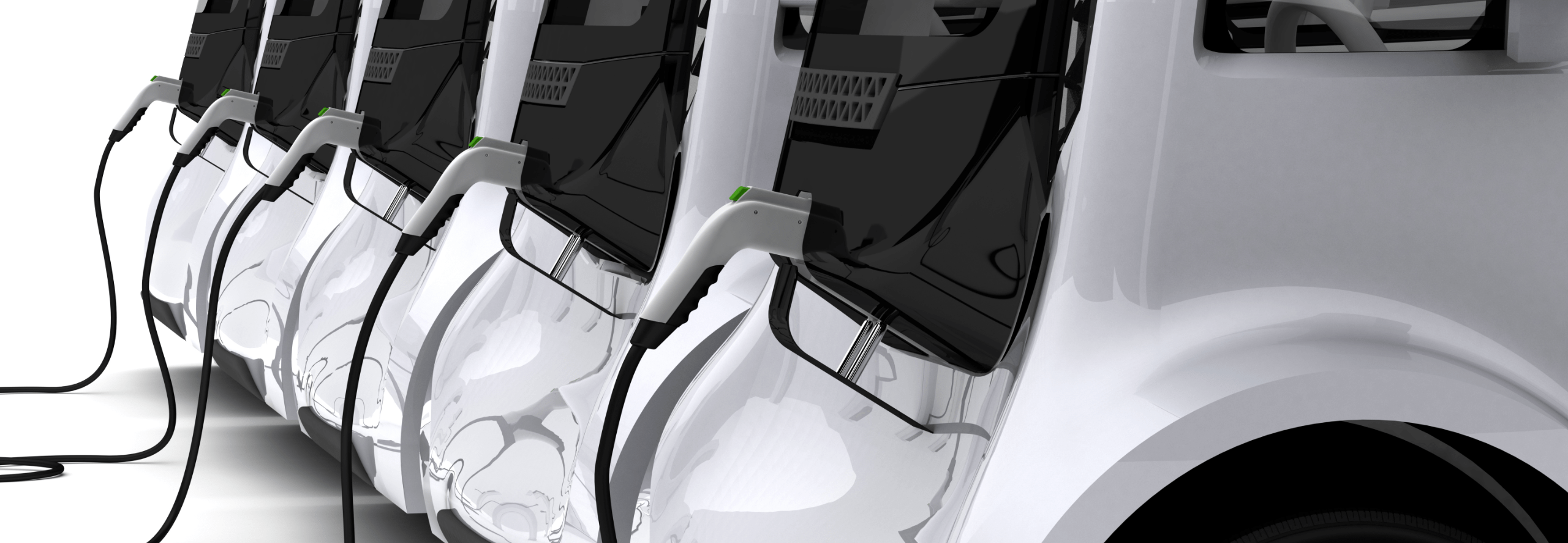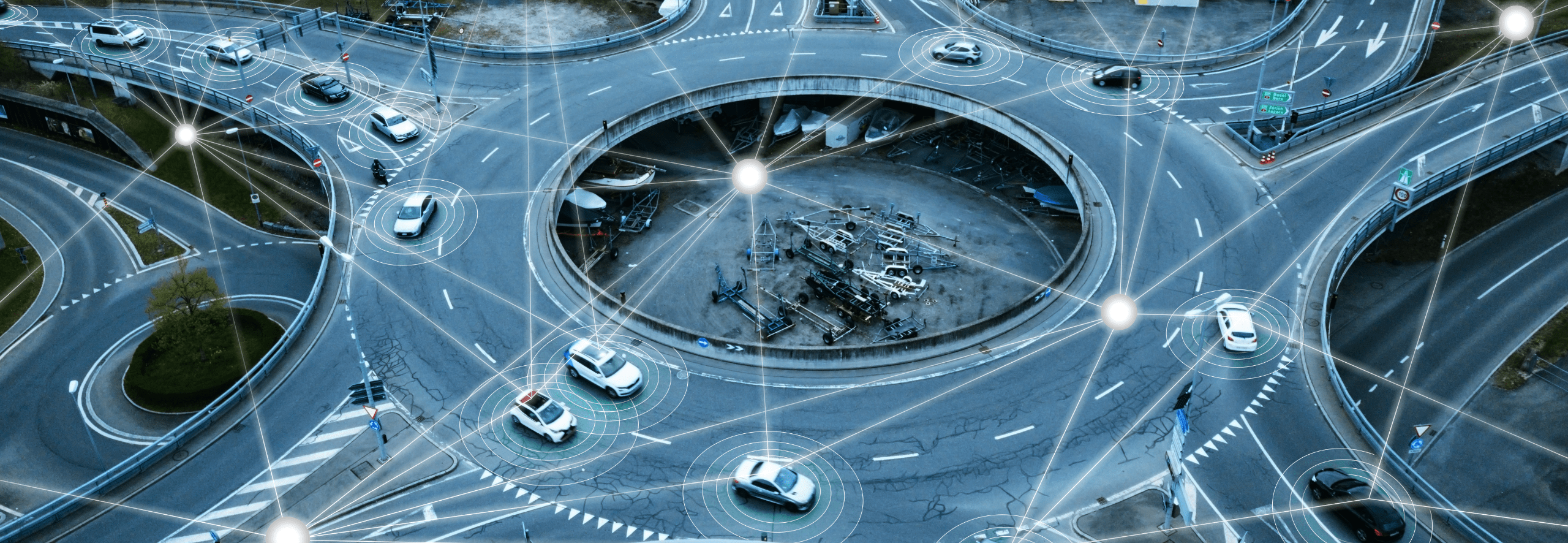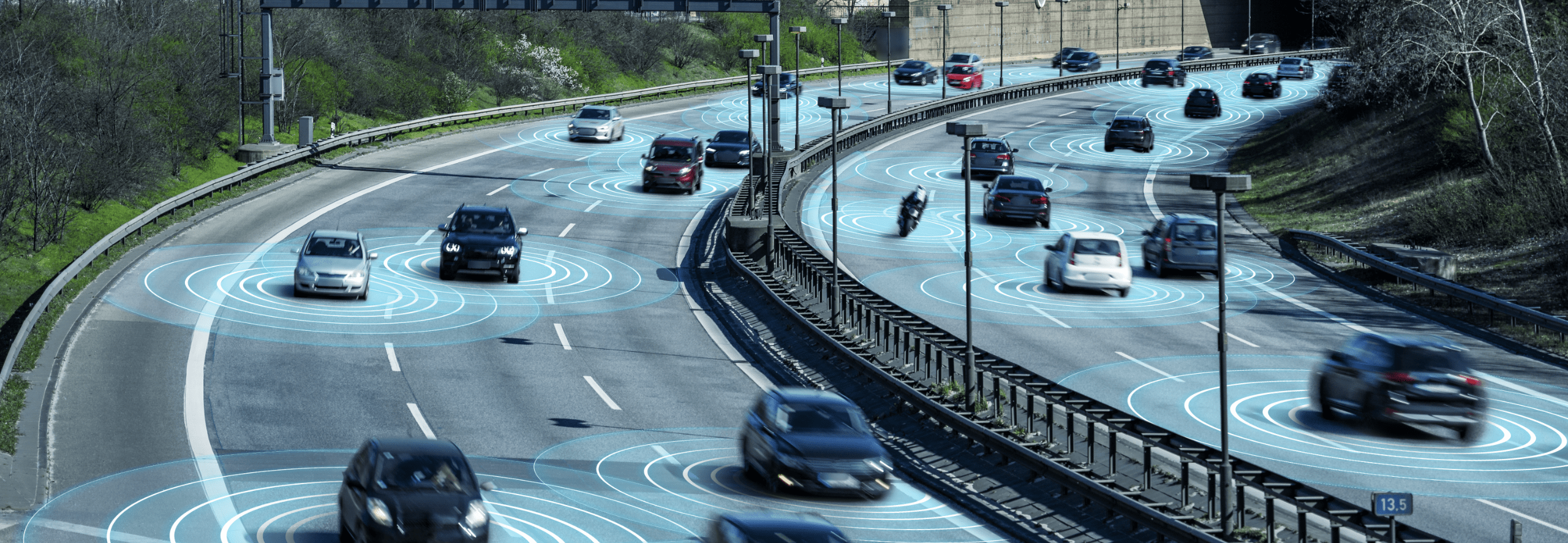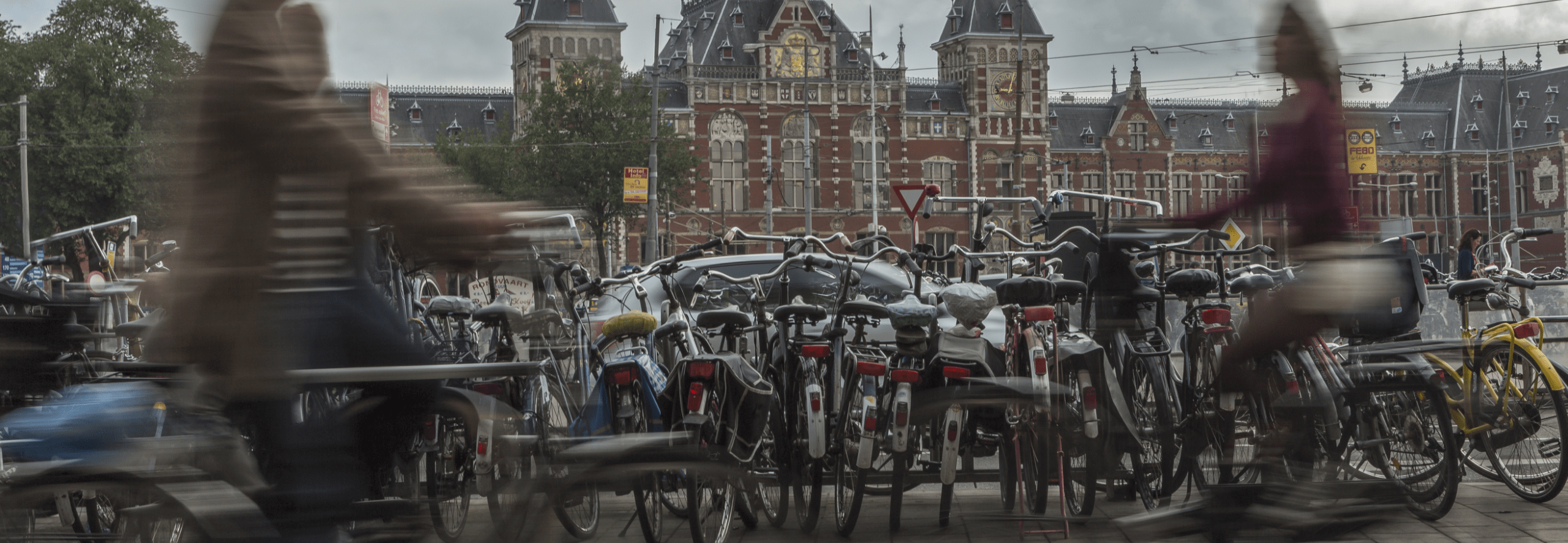Sustainability and the city: Reinventing the future with high-tech and low-tech solutions
Sustainability and the city: Reinventing the future with high-tech and low-tech solutions
Sustainability and the city: Reinventing the future with high-tech and low-tech solutions
When it comes to our love of cities, there’s both good news and bad news: Cities have the distinction of being both engines of economic growth and the main culprits behind climate change and economic inequality. While cities occupy less than 2% of the world’s land surface, they are home to 60% of the population and nearly 80% of the carbon emissions, according to the UN. They contain deep pockets of poverty, a diverse middle class and a sliver of extremely wealthy individuals. The COVID-19 pandemic has exacerbated the trend towards economic inequality, but it also provides an opportunity to reinvent cities as we know them through both high-tech and low-tech initiatives.
For centuries, cities have been the fundamental nodes of economic activity and social life. They are hubs of talent, creativity, and dynamism. As Columbia University’s Saskia Sassen has noted, “cities do the work of globalization.” They are a repository of talent and vibrancy. No wonder that so many startups and established companies strive to tap into their seemingly inexhaustible dynamism. But for all the good they bring; cities are failing us in at least two ways. Many of them continue to reel from the long-term consequences of manufacturing flight. Vast swaths of American and European cityscapes are derelict wastelands full of despair. As a result, nearly every major city is “in fact, divided into two, one the city of the poor, the other of the rich,” as the Greek philosopher Plato once said.
"Pardon Me Boys… Is That ‘The Gig’ in Chattanooga?"
But post-industrial decline is not necessarily destiny. Consider Chattanooga, Tennessee, the city immortalized by Glenn Miller and His Orchestra in 1941. At the time, this city of 129,000 was home to prosperous textile, furniture, and metal-working factories. All southbound trains made a stop there. By the late 1950s, manufacturing was leaving elsewhere, and middle-class white families headed for the suburbs.
In 1969 the Federal Government determined that Chattanooga had the “dirtiest air of any city in the United States,” even after half of the city’s factories had shut down. The local government immediately instituted air quality targets and regulations, and businesses invested heavily in green energy.
It took three decades for local philanthropists and politicians to join forces with the aim of revitalizing the downtown area. The only possible strategy involved creating the conditions for such service activities as tourism, high-tech, healthcare, finance, and insurance to grow.
During the 1990s it was one of just 18 American cities to gain residents. This turnaround attracted a major investment by Volkswagen in 2008. Encouraged by these early successes, local government, business, and civic leaders decided in 2009 to think big by investing in a citywide gigabit-per-second fiber Internet network, the first in any American city (even today, fewer than 200 have been built). Known as “The Gig,” it boasts the fastest connection speeds in the country, a move that attracted numerous startups and gig workers from as far away as San Francisco and New York City, including telecommunications companies, healthcare equipment manufacturers, robotics designers, and 3D-printing pioneers.
The Environmental Protection Agency proposed the city as a national model to emulate. Since 2013 the city has cut energy use by 30%, propelling it to the top spot of the Department of Energy’s Better Buildings Challenge. Volkswagen, the local airport, and BlueCross BlueShield of Tennessee now generate more than 15 megawatts of solar electricity, equivalent to the consumption of 10,000 homes, or one in seven in the city.
30%↓
Since 2013, Chattanooga has reduced its energy use by 30%
But not all cities share Chattanooga’s success. The vast majority of cities struggle to meet expectations when it comes to sustainability.
Cities are much more energy-intensive than rural areas and urban residents much more wasteful. They are growing at the whopping rate of 1.5 million people per week worldwide. Simply put, there is no solution to the problem of environmental degradation and climate change unless cities become more sustainable.
Demographically speaking, the slowdown in the world’s population growth means that there is hope for a more sustainable planet. But the decline in the number of babies coincides with a swift expansion of the urban middle-class consumers, especially in Asia and increasingly in Sub-Saharan Africa. Every year, nearly 200 million people join the ranks of the middle class globally, resulting in more people engaged in a protein-rich diet, homes with air conditioning, automobiles, vacations, and other resource-intensive consumption patterns. Most of the world’s middle class lives in cities, and that is especially true in the case of the new middle class in emerging markets, where the concept of suburban life has yet to gain in acceptance.
Urban Agriculture in EMEA
It may seem paradoxical that, while most urban growth is occurring in the developing world (from Lagos and Nairobi to Dhaka and Jakarta), some of the most creative ideas to reinvigorate cities and make them more sustainable are also emerging from Africa, the Middle East, and Asia. Perhaps the best example involves urban agriculture. There are multiple benefits to growing food in the city, including reduced carbon emissions, improved air quality, and transportation savings. World War II’s “victory gardens” are back, with a vengeance.
Urban farming comes in two kinds, horizontal and vertical. “Food is now been grown in such unlikely places as old factories, abandoned warehouses, and industrial buildings,” says Ravindra Krishnamurthy, an expert on vertical agriculture. “Technological advances in vertical farming methods and indoor lighting is enabling to grow food alongside existing commercial and residential structures and making local food available for city dwellers.” Jack Ng built Sky Greens, one of the world’s first large and commercially viable vertical farms in Singapore. He grows vegetables like lettuce and spinach in A-shaped towers soaring 30 feet, with 38 tiers of growing troughs which rotate at a rate of one millimeter per second, “Which ensures uniform distribution of sunlight, proper air circulation and irrigation for all plants.” The true breakthrough lies in the efficient use of resources. Each tower needs only as much energy as a 40-watt light bulb. The water is recycled, filtered, and recirculated. All organic waste is composted and reused.
Vertical agriculture has the potential of revitalizing cities in decline. “Entrepreneurs are taking advantage of inexpensive former warehouses and factories in Detroit and transforming them for agricultural use to produce local foods,” reports The Detroit News. For instance, “Green Collar Foods mists the bare roots of kale, cilantro and peppers using an aeroponics system under fluorescent lights in its 400-square-foot plastic-encased greenhouse. The system is built vertically, stacking plants on shelves to grow above each other.” Jeff Adams launched Artesian Farms in 2015 at a 7,500-square-foot vacant warehouse. He uses twenty times less water to grow a bundle of lettuce than his California competitors. Most importantly, vertical agriculture in cities promises to reduce the carbon emissions involved in transportation and to shorten delivery times. “The food you’re eating right now, its seven to 10 days before it reaches Michigan,” Adams notes. His produce “is from here to the market in a day, at most, 48 hours... It’s going to be much more flavorful and much more nutritional.”
Urban horizontal agriculture will be crucial for meeting the needs of the rapidly growing cities of Africa, where transportation from the countryside represents a key bottleneck in the supply chain. For instance, city officials in Kampala and Nairobi, the capitals of Uganda and Kenya, respectively, have encouraged agricultural activities for years, with varying degrees of success. Some studies indicate that already “800 million people are engaged in urban agriculture worldwide, producing 15 percent to 20 percent of the world’s food.” They’re mostly in the developing world. In Africa, as many as 35 to 40 million people receive their food mainly from urban farms.
There’s also a low-tech and horizontal version of urban agriculture, as practiced in Sub-Saharan Africa, where 30% of the food is grown within the limits of major urban areas. Given the poor transportation infrastructure, the main advantage of urban produce farming lies in being able to reach the consumer without delay. Farming inside a shipping container is the latest trend. It allows for careful control of temperature and humidity and is much more efficient in the use of water than open-air agriculture. Solar panels can provide the energy needed in a part of the world where the electricity supply is unreliable or non-existent.
-------
Cities can become the solution to the problems of inequality, waste, and climate change, as opposed to the problem itself. Cities are the future more so than at any other moment in history, for better or worse.
Cities can become the solution to the problems of inequality, waste, and climate change, as opposed to the problem itself. Cities are the future more so than at any other moment in history, for better or worse.
Go! Mindblowing mobility driving transportation’s transformation
Go! Mindblowing mobility driving transportation’s transformation
Go! Mindblowing mobility driving transportation’s transformation
Many of the future of mobility’s shiniest toys—flying cars, robot taxis, electric airplanes—are on the horizon, but not necessarily practical modes of transport just yet. But big investment in other mobility technologies, such as electrification, autonomous vehicles (AVs), mobility-as-a-service (MaaS) platforms and in-vehicle commerce, indicate massive changes to our global transportation system are imminent and will disrupt transportation both inside and outside cities.
“Autonomous connected electric fleets of cars will expand in a zigzag nature as technologies and government regulations evolve unevenly,” notes ZoZo Go CEO Michael Dunne in the foreword to Evangelos Simoudis’s book Transportation Transformation (Corporate Innovators, LLC, 2020). “But by 2030, we should be witnessing changes to our cities that make us stop and say: ‘Wow!’ One thing is certain: The first transformations will occur in cities.”
Mobility’s "wow" moment should entice business leaders from many different industries to recognize the enormous potential for new products and services, and even new markets, that will present themselves as this transformation unfolds.
Current advances seem destined to produce mobility-as-a-service models in which a consumer—let’s go with a suburban resident named Fred—has an autonomous pod fetch him from his home, ferry him to the train (or hyperloop) station and then board an autonomous shuttle to his office. In this scenario, which Simoudis describes in his book, Fred’s subscription-based, app-enabled MaaS platform lets him work, shop and order dinner during his seamless 50-minute commute. Other mobility prognosticators say that’s only the beginning.
“You can even imagine a world where the vehicle is essentially a stand-alone company operating by itself, succeeding based on what it learns through its AI and machine learning, making a living off of its environment by providing mobility services,” Mobility Open Blockchain Initiative (MOBI) Founder and CEO Chris Ballinger told innovation expert and podcaster Grayson Brulte.
Similarly jaw-dropping snapshots of mobility’s future already exist in Singapore, Shanghai, New York, Istanbul, Seoul, Helsinki and other hubs. These developments are space-aged and, at times, chilling, but also surprisingly ordinary in some cases.
Yes, that Tesla Model S giddy-ups to 60 mph in 2.4 seconds and, yes, it still feels liberating to walk away from an Uber ride without the hassle of a traditional payment. But that robot taxi ride in Shenzhen, China? It feels and looks less Jetsons-y and more like you’re riding in the backseat of your brother-in-law’s Pacifica piloted by the Invisible Man. (The intentional familiarity should help adoption, experts say.) What’s less commonplace is awareness of the daunting risks that could hinder mobility’s rapid advance. The U.S.-owned Global Positioning System (GPS), a foundational enabler of many mobility advancements, turns out to be vulnerable to interference, both unintentional and intentional.
How these and other transportation advances, opportunities and risks converge will be determined by less tangible factors, such as public-private collaboration, policymaking, regulatory decision-making, non-stop machine learning, standards-setting and old-fashioned risk management.
"THE FUTURE KEPT ARRIVING. OUR BRIGHT NEW TOYS BEGAN TO RUST BEFORE WE COULD GET THEM HOME, AND LIFE WENT ON MUCH AS BEFORE."
— Ian McEwan, Machines Like Me
THE GLOBAL ELECTRIFICATION OF PUBLIC AND PRIVATE VEHICLES MAY BE THE SAFEST BET TO PLACE WHEN FORECASTING THE FUTURE OF MOBILITY.
Source: Electric Vehicle Outlook 2020, BloombergNEF
Autonomous
Self-driving or self-governing vehicles have been a subject of discussion, research and development for a long time. The question has always been the extent of driver supervision required.
“The shoulder area is very diagnostic of human intention,” venture capitalist James Gowers explained to an IEEE audience during a presentation showing how Perceptive Automata’s “state of mind AI” (SOMAI) model for autonomous vehicles can accurately assess whether urban pedestrians are aware of nearby vehicles and whether walkers nearing crosswalks intend to continue into the street. By consuming an endless diet of “training data” based on the social cues and other subtle signals human drivers reflexively use to make decisions, the algorithms propelling autonomous vehicles safely out of prototype mode and onto more streets are getting smarter every second.
Jim Adler, the head of Toyota AI Ventures told Wall Street Journal columnist Christopher Mimms that “software is eating the world, and cars are next on the menu.”
AV ventures have been devouring eager investment capital as technology companies partner with OEMs and start-up AV companies to produce new AV models and MaaS offerings. Three years ago, research firm IHS Markit projected that more than 33 million autonomous vehicles would be sold globally in 2040, up from 51,000 in 2021. This forecast now seems low, following a string of tech-automotive consolidations and partnerships (e.g., Microsoft and GM/Cruise, Amazon and Zoox, Google and Waymo, Aptiv and Hyundai, Argo AI and Ford/Volkswagen) and Apple’s not-so-secret AV initiative (Project Titan) looming in the wings. Plus, China’s production of autonomous EVs remains on track to surge past current U.S. production levels.
Connected
The U.S.-based International Society of Automotive Engineers (SAE) maintains a six-point scale that rates vehicles based on their degree of automation, from Level 0 (no automation) to Level 6 (full automation). In April 2021, the SAE updated its driving classifications to specify human drivers’ responsibilities while differentiating between the first three levels (grouped as “driver support systems”) and the second three levels (grouped as “automated driving systems”).
“Connected” describes the communication a vehicle conducts with external sources, such as other vehicles, traffic infrastructure, emergency services and other nodes. Sticklers will explain that an autonomous vehicle cannot be a connected vehicle because those interactions negate its ability to operate independently—which explains the term “connected automated vehicle” (CAV).
Vehicle-to-vehicle (V2V) and vehicle-to-everything (V2X) communications promise to provide some of the most dramatic future-of-mobility changes, risks and improvements across numerous areas, including highway/road safety, traffic congestion reduction, pollution control, infrastructure funding and more. The development of global connected-vehicle standards—massive, multi-stakeholder processes driven by organizations like Intelligent Transportation Society for America (ITS America) and its counterparts in Europe, Japan and elsewhere—involves the hashing out of programming codes, definitions and formats required to support interoperable, consistent and seamless communication exchange among shared information systems and devices.
V2X communications will facilitate highly calibrated, more equitable automated micro-tolling systems through which road users will fund maintenance and improvements. V2V communications will continuously transmit road conditions, traffic signal patterns, and speed changes among private and commercial vehicles, generating major reductions in congestion while enabling other movement efficiencies such as truck platooning, in which one or more freight-hauling trucks closely shadow a lead truck to improve route efficiency.
V2X technologies could eliminate or lessen the severity of up to 80% of non-impaired crashes, according to ITS America research, which in turn will reduce emissions given that accidents are the source of more than half of all U.S. traffic congestion.
80%
V2X TECHNOLOGIES COULD ELIMINATE OR LESSEN THE SEVERITY OF UP TO 80% OF NON-IMPAIRED CRASHES.
Embedded
The “X” in V2X communications will include a wide range of commercial vendors selling EV charging, parking services, maintenance, snacks, groceries, entertainment and other offerings. This V-commerce opportunity is huge: Global connected car payments will surpass $650 billion by 2030 when roughly 1.7 billion connected vehicles are on the road, according to PTOLEMUS research. MOBI’s Ballinger said that autonomous transactions will be more impactful than autonomous driving.
An embedded, connected and integrated in-vehicle payment capability is an essential building block of future MaaS offerings: “For the user, MaaS offers added value through a single application to provide access to mobility, with a sole payment channel instead of multiple ticketing and payment operations,” notes a recent ITS Europe paper.
As with other future-of-mobility developments, the size and challenges of the vehicle commerce opportunity hinge on a complex mix of interrelated factors, including the establishment of V2X communications standards, data privacy and security, major questions concerning data ownership, integration among numerous types of technology (e.g., payments, tax determination, e-commerce), regulatory responses and more.
GLOBAL CONNECTED CAR PAYMENTS WILL SURPASS $650 BILLION BY 2030 WHEN ROUGHLY 1.7 BILLION CONNECTED VEHICLES ARE ON THE ROAD, ACCORDING TO PTOLEMUS RESEARCH
Risks and roadblocks
Future-of-mobility opportunities remain fluid thanks to regulatory volatility, known and evolving threats, uncertainty related to emerging mobility standards and shifting human and societal factors. Business leaders evaluating mobility’s current trajectory for opportunities should keep tabs on the following variables:
Regulatory responses
Bans on combustion-engine vehicles mark one of the most common predictions in “future of transportation” articles and are increasingly a theme in national and state-level lawmaking bodies. A raft of other rules concerning different aspects of CAV manufacturing and usage are also on the way. “Getting the technology to make the vehicles is only half the challenge,” notes a report from the National Association of Insurance Commissioners (NAIC) in the United States, which also indicates that more than half of all U.S. states already have enacted AV-related legislation. “The other half will be creating a legal, liability and regulatory framework to govern their use on public streets.” Rules-making will cover strategic national interests, such as control over the battery supply chain, as well as fascinating legal matters. Who’s at fault if the “operator” of a Level 4 AV was reading at the time of an accident? Are DUIs possible in Level 5 AVs?
Agreement on standards
The scope of standards-setting activities surrounding connected and autonomous vehicles is mind-boggling. In recent months and years, vehicle cybersecurity standards along with good and best practices have been undertaken, or called for, by the Singapore Standards Council, Transport Canada, the United Nations Economic Commission for Europe, the National Development and Reform Corporation (NDRC) in China and the U.S. Automotive Information Sharing and Analysis Center (Auto-ISAC). The British Standards Institution Group, the Society of Automotive Engineers, the European Telecommunications Institute and the International Organization for Standardization (ISO) have also weighed in on vehicle cybersecurity. Global standards governing CAV-to-CAV communications—essentially a new language—are also underway. Given that the global transportation sector is the second largest producer of greenhouse gas emissions beyond electricity/heat generation, standards are also needed for carbon measures. In the United States, the NAIC has adjusted insurance coverage frameworks to adapt to ride-hailing activity; now its Innovation and Technology Task Force is examining how to treat bodily injury, property damage, liability coverage and comp and collision for autonomous vehicles.
GPS and V2X threats
Many mobility-venture pitches pivot on the rock-solid notion that if you know a vehicle’s or a passenger’s time and position, you can monetize that data in new ways. But what if time and positioning data is at risk? It turns out that GPS and other nations’ global-navigation satellite systems—Europe’s Galileo, China’s BeiDou and Russia’s GLONASS—are more vulnerable than most lay people realize. Airplane pilots and sea captains have experienced instances of GPS interference for years. In late 2020 through January 2021, pilots within the Wilmington, North Carolina airport experienced GPS-signal interruptions during critical phases of their flights. The culprit took weeks to identify: a wireless control system from a nearby utility company. Other sources of GPS jamming include natural phenomena (solar flares), domestic military exercises, military aggression (Seoul, South Korea regularly experiences outages), privacy jammers, and unintentional interference from public and commercial sources. Global positioning outages can have sweeping effects beyond transportation given that the global financial system relies on these systems to clock the precise time of transactions and that extreme-weather detection systems rely on GPS data. Rival nations would like to see GPS knocked off its perch as the world’s standard global-navigation satellite system. The radio frequency spectrum (75 MHz in the 5.9 GHz band) historically reserved for licensed intelligent transportation systems is also at risk, according to many advocates of vehicle safety and V2X communications. A late 2020 decision by the U.S. Federal Communications Commission (FCC) made a portion of that previously reserved spectrum available to unlicensed, commercial wireless applications. “In light of the increase in fatalities on American roadways last year, the Federal Communications Commission (FCC) made a dangerous decision to give away a majority of the 5.9 GHz spectrum previously reserved for transportation safety,” ITS America President Shailen Bhatt said in response to the FCC’s decision. “Not only has the FCC limited transportation use to 30 MHz of spectrum, it has failed to show that it will ensure that spectrum is usable by protecting it from harmful interference.”
Cybersecurity
As the software enabling autonomous vehicles gets ever more intelligent, concerns about physical safety will decrease, yet the need to focus on passenger’s data security and privacy will intensify. Earlier this year, the European Union Agency for Cybersecurity (ENISA) published a hefty report exhorting the AV ecosystem not to wait: “The automotive industry should embrace a security-by-design approach for the development and deployment of AI functionalities... It is important to promote a culture of cybersecurity (particularly on AI-enabled vehicles) across the automotive ecosystem.” Energy grids also will require stouter cybersecurity as more and more drivers rely on them to charge their EVs. Cyber attacks can become a show stopper if major incidents occur.
Behavioral resistance
For drivers, the transition from combustion-engine vehicles to EVs has been a smooth one, and this should hold as millions more drivers make the shift in the future. Aside from regenerative braking, engine silence and a slightly different start-stop cycle, the differences between piloting a 2021 Ford F-150 and a 2022 F-150 Lightning are minor. Autonomous vehicles will require deeper behavioral change from passengers and from vulnerable road users (e.g., pedestrians, cyclists, scooters, etc.). A nasty accident could cause adoption backlashes as it goes viral on social media. When it comes to micro-mobility vehicles that figure as important nodes in cities’ MaaS plans, a sizeable portion of the population remains unwilling to use electric scooters and bikes. A 2020 online survey of 2,000 South Koreans found that 35% of respondents were “likely” or “very likely” to use personal mobility devices (PMDs); 27% were “unlikely” or “very unlikely” to use PMDs; and 37% were on the fence.
As for changing behavior in the marketplace, consumer migration from awareness to acceptance to commitment to act takes time. Word-of-mouth, convenience, momentum and the experience curve engenders confidence over time. Over a century ago, the market transitioned from the horse and buggy to the automobile once mass production became a reality.
However, humans’ willingness to try new modes of mobility and other behaviors can, of course, change dramatically in short periods of time under the right conditions. This capacity was evident last year as crystal-clear blue skies emerged over the world’s most congested megacities thanks to the pandemic’s temporary impacts on greenhouse-gas emissions. Rapid mobility developments also occurred in old-school global cities: The leaders of London and Paris leveraged the pandemic’s vehicle-traffic reduction effects to quickly install kilometers and kilometers of new bike lanes.
Expect more of these rapid, unexpected developments to occur, says Texas A&M Transportation Institute (TTI) Director Gregory Winfree, who oversaw multi-modal transportation initiatives during his previous tenure in the U.S. Department of Transportation. “We’ve seen more dynamism in the past 10 years than we witnessed in the previous 100 years,” Winfree noted. “And that’s only going to increase over the coming decade.”
"EXPECT MORE OF THESE RAPID, UNEXPECTED DEVELOPMENTS TO OCCUR. WE’VE SEEN MORE DYNAMISM IN THE PAST 10 YEARS THAN WE WITNESSED IN THE PREVIOUS 100 YEARS."
— Gregory Winfree, Texas A&M Transportation Institute
Did you enjoy this content? For more like this, subscribe to the VISION by Protiviti newsletter.
Sustainability strategist: By 2030, we’ll know what cities will be unlivable
Sustainability strategist: By 2030, we’ll know what cities will be unlivable
Sustainability strategist: By 2030, we’ll know what cities will be unlivable
Andrew Winston is a globally recognized expert on megatrends and how to build resilient, profitable companies by helping people and the planet thrive. He is one of the most widely respected strategists and speakers on sustainable business in the world and was selected for Thinkers50 Radar list of “30 thinkers to watch in 2020,” a global ranking of top management thinkers. His views on strategy have been sought after by many of the world’s leading companies, including 3M, DuPont, Johnson & Johnson, Kimberly-Clark, Marriott, PepsiCo and Unilever, among others. Winston has written four books, including Green to Gold, one of the best-selling green business titles ever, and has reached more than 100,000 people in seven languages. His fifth book, Net Positive, is due out later this year. VISION by Protiviti’s Editor-in-Chief Joe Kornik sat down with Winston to discuss Sustainability and Cities.
Kornik: Even before COVID, many cities around the world were dealing with a looming climate crisis. Then they got hit with a pandemic. What do you think will be the impact of COVID on cities?
Winston: We won’t really know for years, but in the short run there’s been an exodus from cities around the world. Mostly by wealthy people who have the means to do remote work from anywhere. I think we’ll see some people leaving expensive cities like San Francisco, New York, London, Paris and many cities in Asia. But I also think the trends that drive people to cities are still pretty much intact, so I think in India, China and Africa you’ll continue to see population gains. At the same time, cities are having to move aggressively on their own sustainability planning. There’s a bunch of cities in the world that are going to be dealing with rising temperatures and sea levels. And I’m not talking too far out: By 2030, I think we’ll have a pretty good sense of what cities are going to be unlivable.
Kornik: Is there a way to convince the C-level to be more focused on long-range thinking?
Winston: That’s a big ask. I mean, with climate we’re talking about consequences that may still be 30 or 40 years off, and that’s just not going to matter to executives. The typical CEO is only in charge for three to five years. The executive boards are the ones who should be thinking more long term, but you usually have to look pretty hard to find board members with a climate or green energy background. You know, they’re typically older, not very diverse and not really prepared for this challenge. Companies would be wise to make sure their boards more accurately reflect the people in the industries they serve and the places where they do business. But overall, I’ve been pleasantly surprised most companies have continued, or even accelerated, their climate initiatives during COVID. They have because it’s good business. People respond to responsible companies, and there’s a tremendous amount of pressure on them from the public and even their own employees.
Kornik: I would think the same would also be true of cities…
Winston: It is. The United States just rejoined the Paris climate accord (Paris Agreement) and there was very little leadership coming from Washington on climate the last four years, so cities responded by picking up the slack. In some ways, I think it made them more proactive. When thinking about their own future and future tax base, cities would be smart to embrace sustainable initiatives. Cities tend to get a bad rap for having a huge footprint, but they’re more efficient than other areas. In a city, each person has a smaller footprint because they’re using less space and sharing more resources. In cities, lots of people use public transport, bike or even walk to work and shopping. Many don’t even own cars, and the ones that do own electric vehicles. Car companies clearly see the writing on the wall; most will have given up on the combustible engine by 2030. We’re going to see electric vehicles start to drop below combustion engine prices in the next few years. Most people want that. Not just because it’ll be cheaper, but because driving an electric vehicle is a much better experience; it’s quicker, it’s more responsive, the maintenance is almost non-existent. It’s just a better car.
CAR COMPANIES CLEARLY SEE THE WRITING ON THE WALL; MOST WILL HAVE GIVEN UP ON THE COMBUSTIBLE ENGINE BY 2030.
Kornik: So, are we finally at the point where the technology makes sustainability good business?
Winston: For cars, I think we’re there. And other sectors are close if they’re not there already. People want the buildings they live in to be efficient and have better air quality. They want the buses around them to be clean; they want the Amazon and FedEx trucks to be electric, and as we get further along in this who’s going to want to go back? This is only moving in one direction and the momentum is unstoppable at this point. I do think cities will partly compete on the quality of life they offer residents, as well as services they provide and how they provide them. And the cities that do it better will be in more demand. Those cities will be the ones attracting the best companies, the best talent and the best jobs. Unfortunately, we didn’t start early enough and we’re late, so there’s going to be some bad things that happen and much of that is going to happen in cities first, unfortunately. But we’re moving in the right direction.
Kornik: Overall, are you optimistic or pessimistic about the future?
Winston: I get asked this question a lot: Are we going to be OK? Well, it all depends on who the “we” is. Plenty of the world is going to come out OK, but there are parts of it that won’t, and it’s kind of how we handle that as a species that will make the difference. It’s hard not to be optimistic about the cost of clean technology; it’s dropped so fast and it’s only going in one direction. There’s no additional cost to accessing the sun or wind, and there’s just no way for fossil fuels to ever compete with that; they can’t win. What worries me, however, is that we need massive collective action based on the premise that we’re all in this together. I think COVID increased that a bit, but not as much as I would have thought or hoped. I just don’t see that in society, but I am seeing it, maybe even more than I thought I would, in corporations. Companies may end up being our salvation here. They have stood up against injustice more so than people and communities. Companies are leading and defending a more just society than governments are right now. Companies get it; for lots of reasons they seem to want to make the world work better. And that could be a huge win for all of humanity.
ARE WE GOING TO BE OK? WELL, IT ALL DEPENDS ON WHO THE “WE” IS. PLENTY OF THE WORLD IS GOING TO COME OUT OK, BUT THERE ARE PARTS OF IT THAT WON’T, AND IT’S KIND OF HOW WE HANDLE THAT AS A SPECIES THAT WILL MAKE THE DIFFERENCE.
Did you enjoy this content? For more like this, subscribe to the VISION by Protiviti newsletter.
Title goes here and here and here
Bio here and here and here and here and here and here. Bio here and here and here and here and here and here. Bio here and here and here and here and here and here. Bio here and here and here and here and here and here. Bio here and here and here and here and here and here. Bio here and here and here and here and here and here. Bio here and here and here and here and here and here. Here and here and here and here and here and here and here and here and.
[Template] person
Bio here and here and here and here and here and here. Bio here and here and here and here and here and here. Bio here and here and here and here and here and here. Bio here and here and here and here and here and here. Bio here and here and here and here and here and here. Bio here and here and here and here and here and here. Bio here and here and here and here and here and here. Here and here and here and here and here and here and here and here and.









